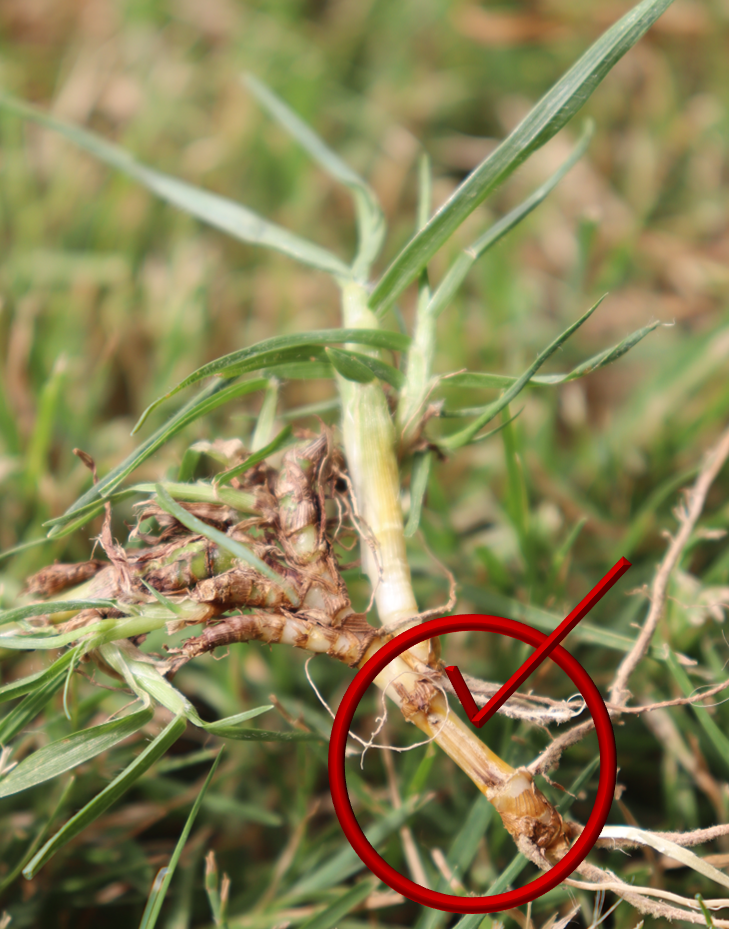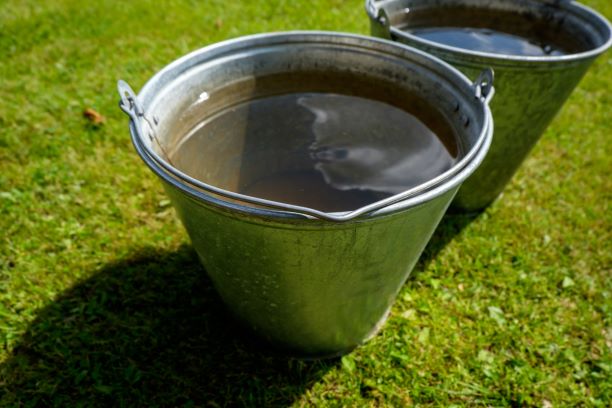When it’s too Hot to Mow Your Lawn!
A healthy lawn provides you and your family with a green, lush and welcoming environment. However, when temperatures rise and the harsh summer sun beats down on your lawn, the ...

Many lawns across Australia will at some stage suffer from drought or water restrictions – but how do you tell if your lawn is Dormant or Dead?
In Australia, most lawns are warm season grasses meaning they are very hardy and need very little water to survive.
Warm season grasses include Buffalo, Kikuyu, Couch and Zoysias. These grasses in times of heat stress and water shortage enter a state of dormancy.
When temperatures are high turf naturally enters a state of dormancy where they start to shut down tissue growth to prevent moisture loss.
 So, dormancy is the natural survival mechanism that allows your turf to stay alive longer when under stress.
So, dormancy is the natural survival mechanism that allows your turf to stay alive longer when under stress.
Generally, most warm season grasses will sit dormant until the next watering or rainfall.
Most importantly – the difference between dead and dormant turf is found by looking at the lawn’s crown at the base of the leaves.
 The crown generally sits at the soil line and is also where the shoot and root section of the grass meet.
The crown generally sits at the soil line and is also where the shoot and root section of the grass meet.
The turf’s crown is a highly active growing point that pushes the stem (the leaf blades) upward.
If the lawn’s crown is white to off white, then there is a high chance that the plant is still alive (see image).
A dead lawn appears dry, brown and brittle across the plant from the leaves down to the base of the crown.
Looking for other ways in which you can help your lawn survive the drought? Here are additional tips that you can do to help your lawn survive.

Remove all dead organic material for your lawn such as thatch, leaves, bark and dry tree branches.
Aerating is a vital part of keeping your lawn healthy during prolonged dry conditions and drought
Aerating, with either a pitchfork or aerating machine, improves the passageway for water and nutrients to reach the lawn’s roots.
More Info: Aeration
Try and stay off your lawn as it is already under stress from lack of water.
The best way to ensure your lawn recovers from lack of water is by not adding any stress through wear and tear.
Your lawn shows signs of needing water when the leaf blades start to wilt.
By watering your lawn thoroughly and deeply you encourage the development of strong root growth in your lawn.
The lawn stays moist and hydrated for longer when watered deeply.
If you are short of water only water parts of the lawn that are drying out and under stress.
It is advised to water your lawn early in the morning between 6 am and 10 am for between 10 and 15 minutes.
Evening watering can induce humidity to occur overnight resulting in fungal problems.
If water restrictions occur in your region, make sure you adhere to the watering requirements based on your restriction level – check with your local water authority for more details.
More Info: Watering Lawn Tips

Grey Water is a very viable alternative to watering your lawn during summer or more importantly water restrictions.
Connecting a hose to your grey water outlet and letting it seep into the lawn is an ideal method of watering.
Grey Water consists of wastewater from your showers, baths, spas, hand basins, laundry tubs, washing machines, dishwashers and kitchen sinks.
Grey Water does not include the water from your toilet.
Read more: How to use Grey Water on your Lawn
Apply a wetting agent to your lawn to improve water absorption.
After long periods of dry, lawns become dehydrated and the soil struggles to absorb water.
A wetting agent helps break down the soil’s surface tension and allows water to soak through.

The rule of thumb when mowing is to not cut your lawn more than 1/3 of the grass blade.
In summer you should raise the height of the mower. During a drought, it is essential to keep your lawn’s blade longer to allow the plant a fighting chance of survival.
More info: Mowing Lawn Tips

LawnPride HydraMaxx 2L Hose On is an ideal liquid Soil Wetting Agent used when watering is restricted and easily clicks onto the end of your hose. LawnPride HydraMaxx 2L Hose On is suitable for use on Zoysia, Kikuyu, Couch and Buffalo grasses. Always read the safety directions and instructions on the product label before use.
SHOP NOW
LawnPride HydraMaxx 5L Concentrate is an ideal liquid Soil Wetting Agent used when watering is restricted. LawnPride HydraMaxx 5L Hose On is suitable for use on Zoysia, Kikuyu, Couch and Buffalo grasses. Always read the safety directions and instructions on the product label before use.
SHOP NOW